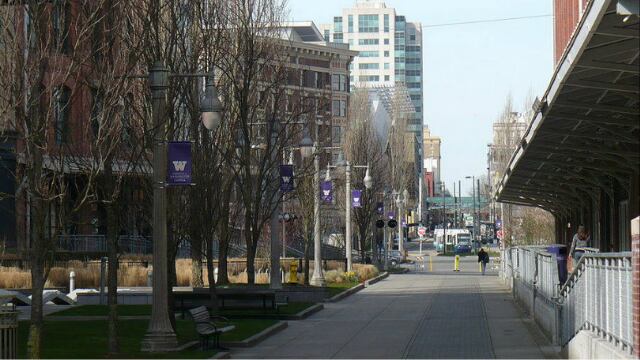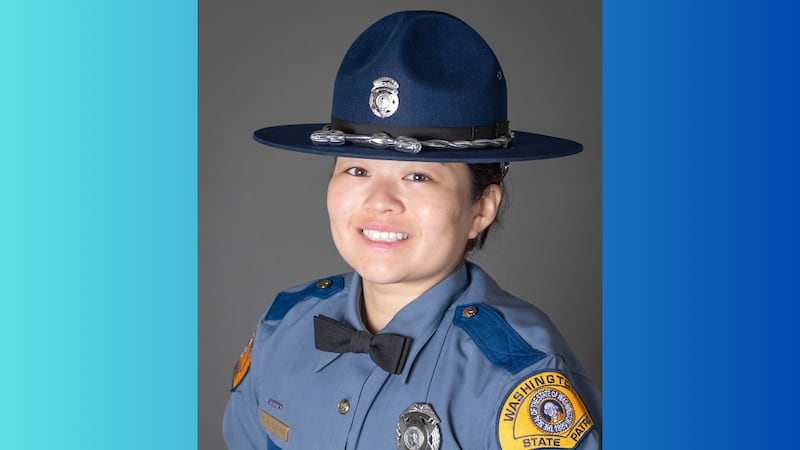TACOMA, Wash. — The preliminary results — while perhaps not surprising to University of Washington Tacoma professors like Christine Stevens — were sobering.
In 2018 at the UW’s three campuses — Tacoma, Bothell and Seattle — an estimated 4,800 to 5,600 students experienced housing instability — spending nights in vehicles and homeless shelters or couch surfing with friends, the study found.
Twenty percent of UW students sometimes ran out of food and didn’t have enough money to buy more.
More than a third sometimes couldn’t afford to eat balanced meals
And slightly more than 20 percent were affected by a recent rent increase, making it difficult to pay for housing.
All of these discouraging findings were released last week by UW, highlighting how an increased cost of living in the region and other factors — including the cost of higher education — are impacting students at the UW’s three campuses.
Scroll down to continue reading
More news from KIRO 7
- 'My world is gone:' Family calls for answers, in high school senior's murder
- Four new measles cases confiremd in King, Snohomish, Pierce counties
- Deputies release sketch of man suspected in sexual assault of 15-year-old girl
- Video shows 74-year-old man being pushed from Las Vegas bus; he later died, police say
- Do you have an investigative story tip? Send us an email at investigate@kiro7.com
For UW Tacoma, the results were even worse. That’s something we should all be concerned about, because it impacts a generation of students at UW Tacoma and a region that will depend on the graduates the school produces in coming years.
Stevens, an associate professor of Nursing and Healthcare Leadership Programs at UW Tacoma, told The News Tribune that of the rates of housing and food instability, UW Tacoma was consistently at the top of every list.
Overall, about 10 percent of UW’s student body participated in the confidential, voluntary study.
“Researchers then weighted the results statistically to project data proportionate to the entire tri-campus population,” according to a press release.
Rising rents and increasing tuition costs were obvious factors in the findings, but particularly at UW Tacoma, the explanations went beyond that, Stevens said.
“The first thing in all of this that we have to realize is the context of the students’ lives do affect their academic success and their graduation rates,” Stevens said. “What we found is that Tacoma definitely comes out looking at more need in terms of food and housing support.”
Specifically, Stevens, whose academic work has often centered on housing and food insecurity among adolescents and, more recently, college students, said that many UW Tacoma students work one or two jobs to support themselves and their families. She also noted that the campus has the highest population of first generation of UW’s three campuses.
“They’re students with a lot of strengths, but also students who are needing support as well,” Stevens said. “We’re not funding higher education. We don’t have affordable housing, and we don’t have any safety net for families along the way.”
While the final results the study are being finalized, there are things we know for certain, Stevens said.
Perhaps most importantly, the problems identified are not altogether new at UW Tacoma.
Back in 2013, Stevens started conducting a smaller but similar poll. At the time, she found that 14 percent of UW Tacoma students were housing insecure, using the McKinney-Vento standard employed by public schools. Meanwhile, 8 percent had stayed in places not meant for human habitation, like tents or cars, and 31 percent identified as food insecure.
The established need at UW Tacoma is one of the reasons the school has taken steps to address it. In 2016, the campus opened a food pantry. More recently, in January, the campus partnered with Tacoma Housing Authority to open up more than 50 new subsidized housing units for students experiencing homelessness.
UW Tacoma also offers emergency aid for students facing unexpected financial hardships and employs a social worker who is available to meet with these students.
Still, it’s not enough, and Stevens sees the preliminary results of the recent study as proof of the work yet to be done.
She also wanted to be clear about one important point: This isn’t another story about the romanticized “starving students” experience. Far from it.
It’s something altogether different, Stevens said, and a clear indication of the new and unique challenges UW Tacoma’s current generation of students are facing.
“The fact that I have students who are enduring these struggles and graduating tells you what kind of strengths they have,” Stevens said. “The biggest takeaway is the issue doesn’t reside in individual students or individual decision making.
"It really is a system issue, and it comes on the heels of our economic times."
For more on this story, click here.
The News Tribune






